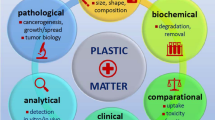Abstract
Many organisms can easily dispose of toxic inorganic arsenic species through gradual methylation of the element and further urinary excretion. In order to clarify the urinary excretion of arsenobetaine observed in a human case of intoxication by arsine, the capacity of highly methylated arsenical synthesis has been investigated in rats acutely exposed during 1 h to increasing concentrations of the same gas [4 to 80 mg AsH3/m3]. Urinary metabolites of arsenic were determined with good agreement in two (Belgian and Italian) laboratories using two different analytical procedures. The sum of inorganic, mono- and dimethylated metabolites of arsenic in urine was shown to be related to the intensity of exposure to arsine. A biphasic relationship was observed: 1 h exposure to >60 mg AsH3/m3 led to metabolite excretion which is roughly 10 times higher than for exposure levels below that limit, suggesting the saturation of a binding site reserve and the availability for metabolism of a greater proportion of the As absorbed above this threshold. Arsenobetaine production, if any, could only be detected when its presence in food was excluded; in addition, amounts appeared negligible and could be disregarded as a common arsenic metabolite in rats.
Similar content being viewed by others
Author information
Authors and Affiliations
Additional information
Received: 26 June 1998 / Accepted: 26 August 1998
Rights and permissions
About this article
Cite this article
Buchet, JP., Apostoli, P. & Lison, D. Arsenobetaine is not a major metabolite of arsine gas in the rat. Arch Toxicol 72, 706–710 (1998). https://doi.org/10.1007/s002040050564
Issue Date:
DOI: https://doi.org/10.1007/s002040050564




